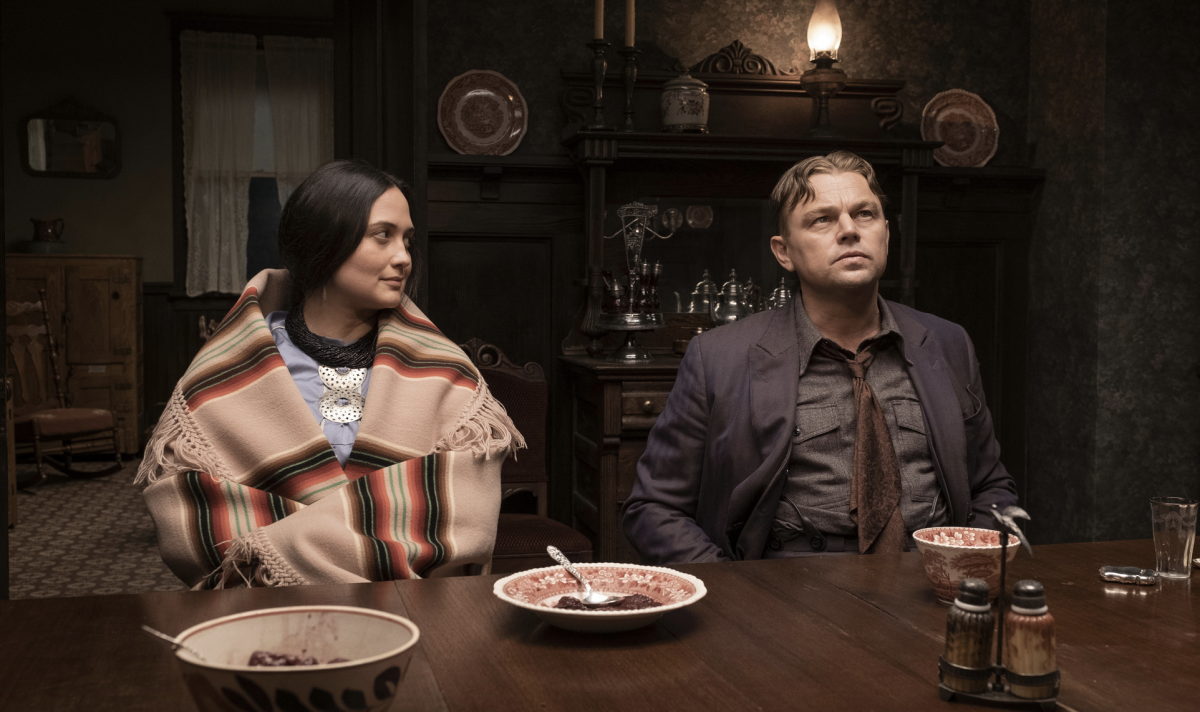
Leonardo di Caprio is given little to work with in Killers of the Flower Moon. Photo: Supplied.
There were two major race massacres in the US southern state of Oklahoma during the 1920s.
The first and most prominent remains one of the darkest days in modern American history where white supremacist groups and militias razed large black areas of Tulsa.
Dozens of African Americans were killed, many more incarcerated, in what is often described as the Black Wall Street Massacre.
Perhaps less well-known were the Osage Indian Murders.
Osage County, where Martin Scorsese’s latest film Killers of the Flower Moon is set, saw the murder of dozens of Indian and some white people in the wake of a major oil discovery on the Osage Reservation.
Initially the discovery made local Native Americans rich, and attracted many white people to move there for work, seeking their fortunes.
One very wealthy cattleman, whose nephew has just returned from the war, seeks to exploit a system whereby if a white man marries an Indian woman and she dies, he inherits her oil wealth.
Coupled with a sort of chaperoning system and the money’s administrators being mostly white men, this situation left the operation open to mass exploitation.
The cattleman in this instance is William King Hale (Robert de Niro). Leonardo Di Caprio plays his nephew, Ernest Burkhart, who has just returned from war.
Initially employed as a driver he spends most of his time chauffeuring Molly (Lily Gladstone) before they fall in love and marry.
Hale sees his opportunity and co-opts Ernest and others around him into murdering Molly’s family. Molly visits the US Capitol in a last ditch bid to seek federal intervention and the newly formed FBI starts investigating.
Killers of the Flower Moon sees most of these events through the eyes of Burkhart who, while professing to love his wife, easily, unquestioningly, does Hale’s bidding.
It’s never clear whether Ernest is complicit in these acts of pure evil, just wants to do his uncle’s bidding, or if indeed he is utterly witless.
The character is poorly written with few lines to give any insight into motivation; Di Caprio struggles throughout this film to add flesh to a carcass. De Niro can sleep walk through nasty characters and does a decent job here, as we’ve seen many times before.
The only fresh perspective offered is that of Molly. The film should be about her story and Gladstone’s performance is magnetic and understated.
The story screaming to be told is how Indigenous people deal with mass subjugation of character and murderous exploitation. Yes of course the film offers elements of racism, but they’re so blatant to be almost caricatures.
One of the Osage Indians who served as a consultant on the film was Christopher Cote. He says giving Burkhart a kind of conscience depicts there is love; but when someone conspires to murder your family, that can’t be love and it’s beyond abuse.
At slightly more than three and a half hours Scorsese had ample opportunity to explore both the white and Indigenous stories in what should have been a much more complex and nuanced affair.
Scorsese has done important work in highlighting these atrocities. I’m not sure how well known they are outside the United States and exploration of them is essential.
But this is Martin Scorsese, who sets himself a high bar. For the most part it plays out like a death match melodrama: the plot often wanders all over the place, there are re-enactments where there need not be for instance, and in this reviewer’s mind the film could have been much more effectively wrapped up in two hours.
Killers of the Flower Moon receives two and a half stars.
Marcus Kelson is a Canberra writer and critic. Killers of the Flower Moon is screening at major cinema chains.












